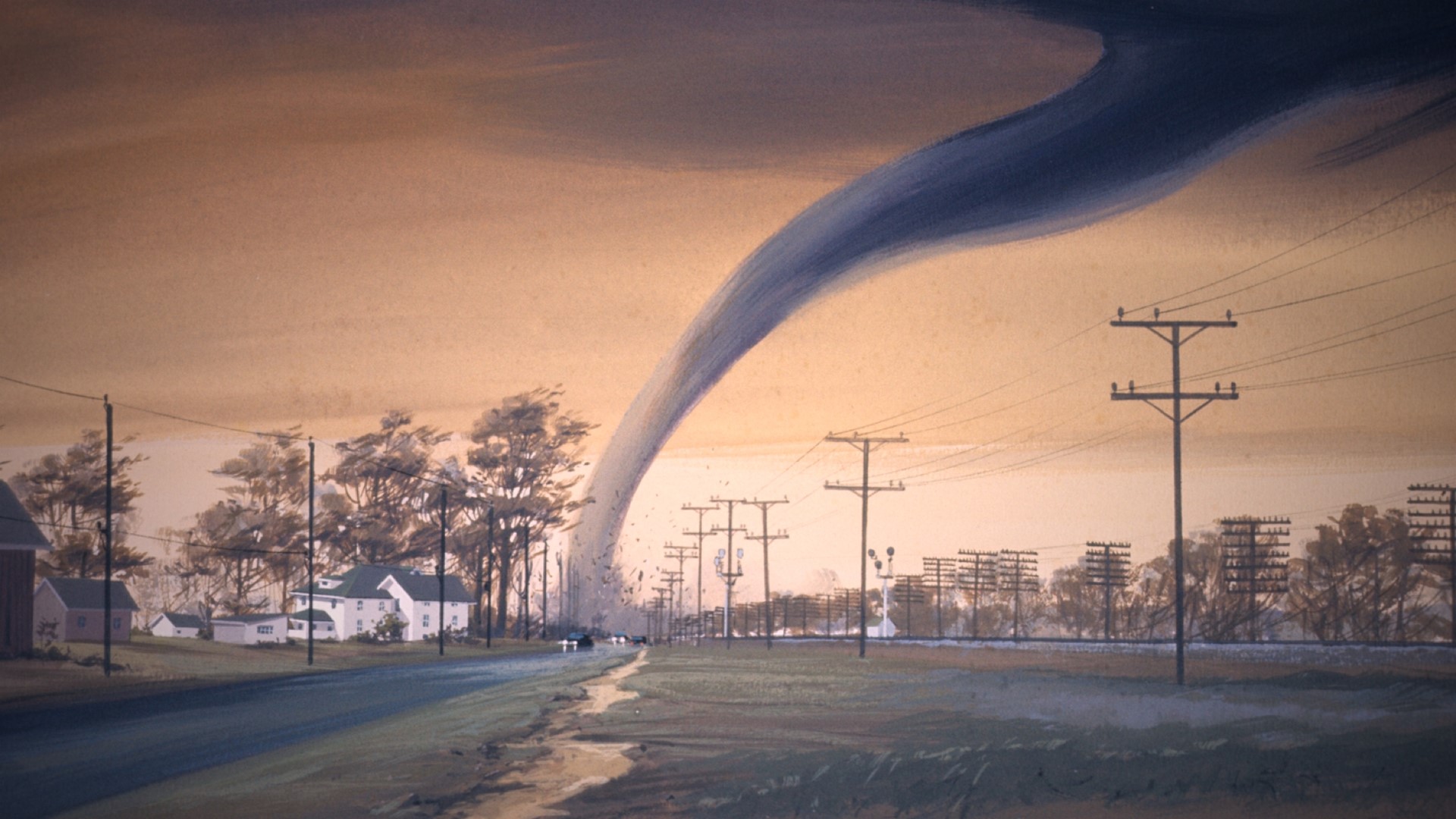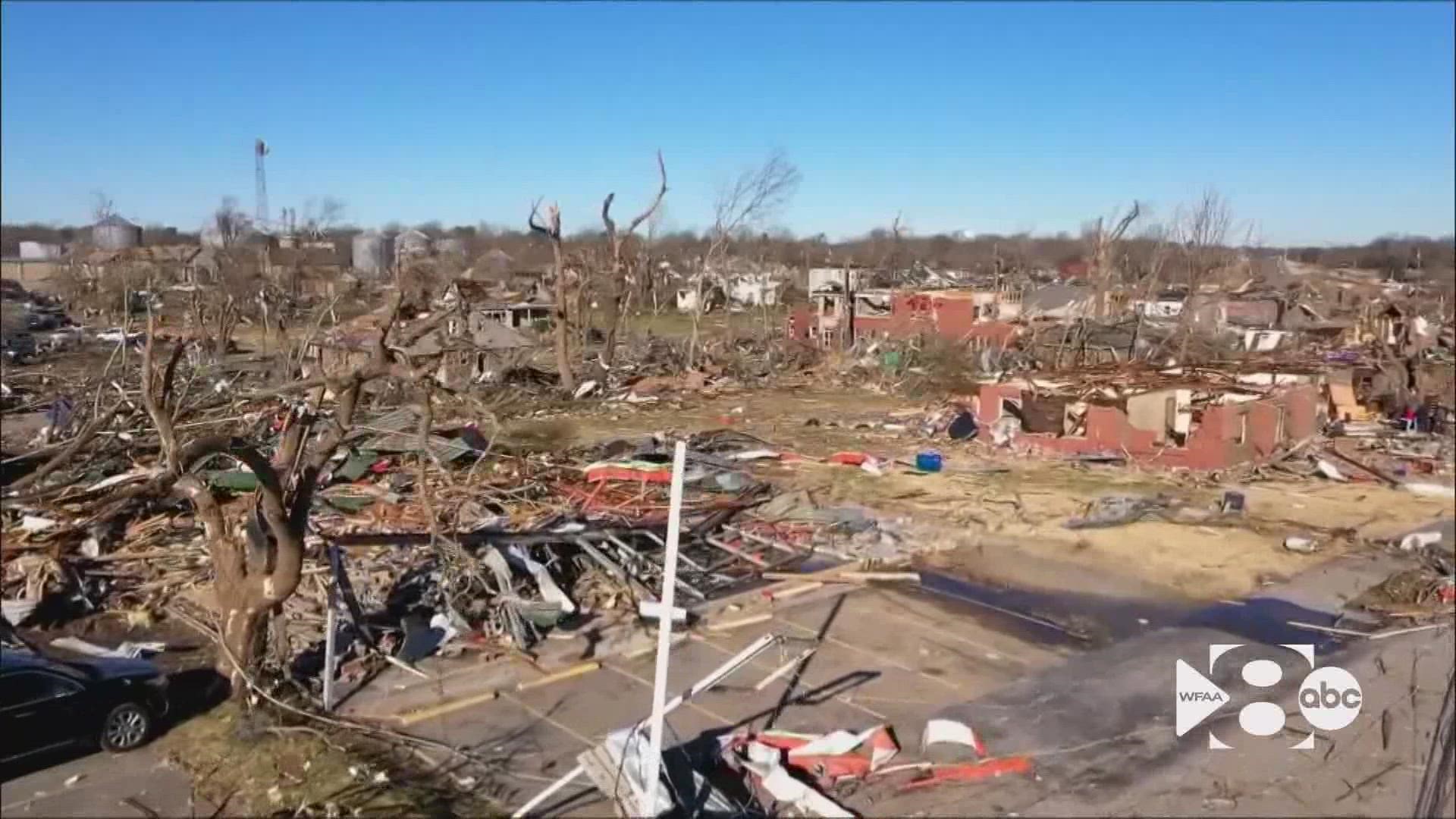Is Tornado Alley shifting? The answer might make your head spin
Are more tornadoes touching down to the east of Tornado Alley's typical boundaries than before? Or is that just anecdotal? We asked some experts to find out.

When you live in Tornado Alley, you can never under-estimate the potential for destruction.
But, lately, the deadliest tornadoes aren't happening in Tornado Alley. They're happening in places like Mississippi and Alabama.
It was just December when a tornado slammed into Kentucky and led to 93 deaths.
If you look into what's happening here, you’ll find articles like this one titled, "Why the famous Tornado Alley is on the move."
So, we wanted to know: Is that true? And, if it is true, why is that happening?
What is Tornado Alley?
Dr. Howie Bluestein is a professor at the University of Oklahoma School of Meteorology. He chases tornadoes in an effort to deploy a mobile radar unit that helps him research why tornadoes form.
Is he noticing a shift in Tornado Alley?
"There've been some years when I first lived here when, if you wanted to see a tornado, you went to southwestern Oklahoma an awful lot," Bluestein said. "And there have been a number of years where we just haven't done that."
Does that mean, anecdotally, that things are changing?
Maybe.
"I've seen some kind of change," Bluestein said. "But then I've also seen it change back."
Alright, then. So let's get to the basics -- like the definition of Tornado Alley. It stretches from North Texas up through Oklahoma, Nebraska and South Dakota.
Bluestein says there are few reasons everyone is so aware of Tornado Alley.
First, there's visibility. A lot of Tornado Alley is on the flat plains, without many trees, buildings or people. So, tornadoes that form here are easy to see and study.
Then, there's reliability. Most tornadoes in Tornado Alley happen around the same time every year -- mid-March through mid-June. And they're usually on the ground around the same time of day, between 5 p.m. and 9 p.m.
What is Dixie Alley?
But popular culture is so focused on Tornado Alley that experts say we tend to be biased against another major tornado hot spot.
“There are other parts of the country that can also get a lot of tornadoes," Bluestein said. "One of them is in part of the southeastern part of the United States. Some people have called it Dixie Alley."
Dixie Alley. Heard that before? It's roughly around Arkansas, Louisiana, Tennessee, Alabama, Georgia.
Compared to Tornado Alley, there are a few reasons it doesn't really capture our imagination.
For starters, the visibility is worse. Here, tornadoes are often obscured by rain or hidden behind trees and hills. As such, they're harder to see and study.
Compared to Tornado Alley there's also less reliability. In Dixie Alley, there isn't really a specific tornado season or time of day that tornadoes happen.
"It seems to me that there really is a perception that people think the tornadoes only happened in Tornado Alley," said Dr. Harold Brooks, a senior scientist at the National Severe Storms Laboratory in Norman, Oklahoma, who has co-authored the research that explores if Tornado Alley is moving.
What experts think
Brook's most recent paper on the idea that Tornado Alley might be shifting concludes that, since 1979, we've seen a 10 percent decrease in the chances of experiencing a tornado within the footprint of Tornado Alley. Meanwhile, his research shows a 10 percent increased chance of a tornado forming within the footprint of Dixie Alley.
So, yes: The tendencies are changing a little.
But that doesn't mean tornado alley is picking up and moving to the East.
That's because the formation of tornadoes is also closely linked with the potential for thunderstorms. Researchers from a group called Climate Central studied one of the key factors that influences thunderstorm formation, and they found an increase in thunderstorm potential in the East around Dixie Alley -- as well as a decrease in that potential around the area of Tornado Alley.
"It appears to be an environmental change," Brooks said. "That means that the frequency of environments that support tornadoes have increased over the last 40 to 50 years in the Mid-South region, and they've decreased somewhat in South Texas, in West Texas."
So, the big question then is: Why?
"It's very tempting to say that it's a result of climate change," Brooks said.
Is climate change to blame?
Ah, yes. Climate change.
At this point, the world is full of evidence that shows how climate change makes extreme events like hurricanes and heat waves more intense. Scientists make those connections by tapping into a long history of records that can go back hundred or thousands of years.
But Brooks says, when it comes to tornadoes, there's only a short history of record-keeping, with the most reliable data only going back 40 years
"So, it's likely that it’s a result of changes in large-scale conditions," he said. "But we don't have nearly as complete of a link as we do with some other things."
Bluestein has the same hypothesis, but agrees there is a lack of proof.
"You need a very, very long period of time to know whether or not this rising trend is just part of the cycle, naturally, that goes up and down," he said.
Conclusion
Is tornado alley is on the move?
Well, something's going on. Scientists have documented changes both in where tornadoes occur, and the conditions needed for them to form.
But is this a permanent change? Is it short-term trend? Is it climate change?
The short answer is we don't have enough information to know for sure either way -- yet.


